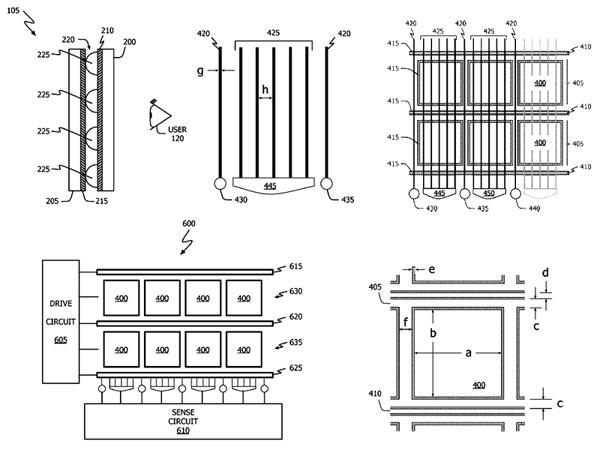Apple files for second force-sensitive display patent
If a recent series of patent filings with the United States Patent and Trademark Office is of any indication, Apple Inc. as early as next year could add force-sensitive detection to the repertoire of its fledgling multi-touch platform, AppleInsider believes.
Originally submitted to the USPTO on May 9th of last year — about five weeks after the first — the patent request again describes today's touchscreens and touchpads as limited by their relatively simple input, which track only the location of the finger or stylus on the surface.
A method of detecting the strength of the user's input would add a new element of control, Apple again suggests. Such a device capable of providing both force and location detection would include "a first transparent substrate (having first and second sets of conductive traces oriented in a first direction), a second transparent substrate (having a third set of conductive traces oriented in a second direction) and a plurality of deformable members (e.g., rubber beads) arranged between the first and second transparent substrates."
Apple explains that the first set of conductive traces, in combination with the conductive traces of the second transparent element, would provide a capacitance signal representing where a user touches the display element. Meanwhile, the second set of conductive traces, in combination with the conductive traces of the second transparent element, would provide a capacitance signal representing the amount of force applied to the display element.
"When used with a display element (e.g., a LCD or CRT), an input-output unit capable of both location sensing and force sensing operations is provided," the company wrote.
Presumably, such technology could first surface in a second-generation of the company's iPhone handset, or more likely the reincarnated Newton PDA.
The latest filing was credited to Apple engineer Steven Hotelling, while the earlier filing named both Hotelling and Brian Huppi.
 Slash Lane
Slash Lane











 Andrew Orr
Andrew Orr
 Sponsored Content
Sponsored Content
 Malcolm Owen
Malcolm Owen

 William Gallagher
William Gallagher

 Mike Wuerthele
Mike Wuerthele
 Christine McKee
Christine McKee







